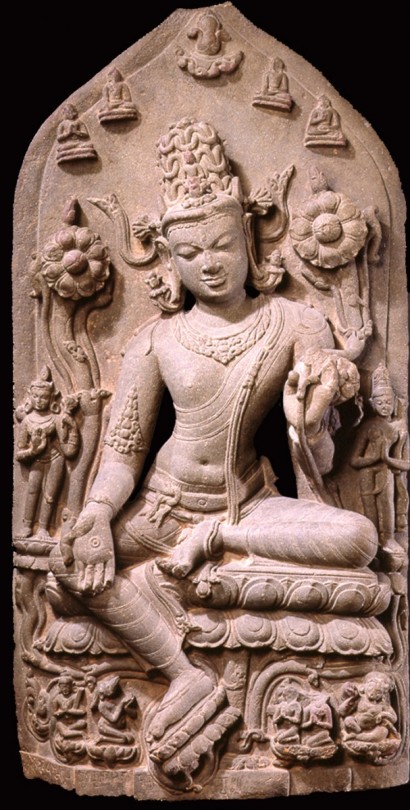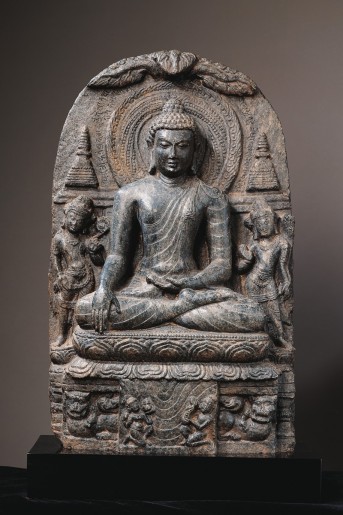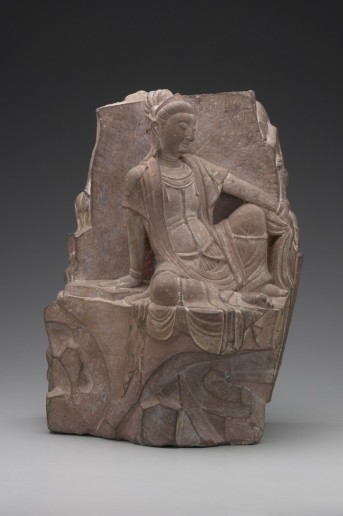India, Bihar or Bengal, Pala period, late 11th–early 12th century; schist; 37 1/2 x 18 1/2 x 6 3/4 in.; Asia Society, New York, Mr. and Mrs. John D. Rockefeller 3rd Collection, 1979.40, photo: Lynton Gardiner, Courtesy of Asia Society, New York.
Avalokiteshvara appears here in a form known as the “Sky-Gliding Lord of the World.” Sitting in a relaxed pose on a double lotus throne, the deity holds a lotus in his left hand. His right hand is in the gift-giving gesture, or varada mudra, that drips nectar to the “needle-nosed” hungry ghost Suchimukha below. The unfortunate being depends on Khasarpana’s generosity for sustenance. This work thus emphasizes the bodhisattva’s core value of compassion, one he shares with related deities. The goddesses Tara and Bhrikuti on Khasarpana’s left and right, and the Buddha Amitabha visible in his crown, are only a few of the many different emanations of compassion depicted in this sculpture. EJ







